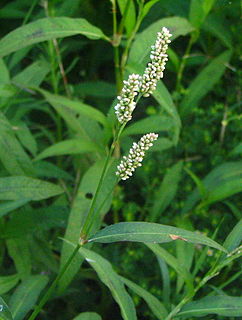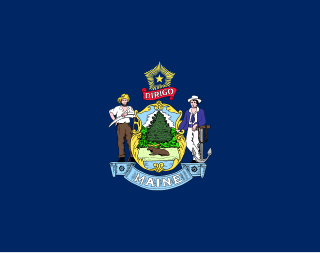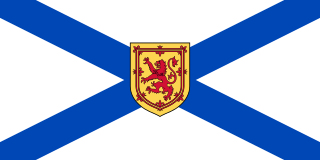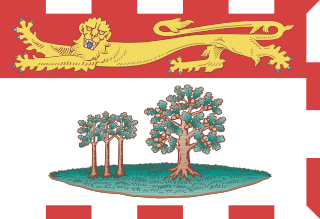
Vaccinium uliginosum is a Eurasian and North American flowering plant in the genus Vaccinium within the heath family.

Periploca graeca, the silkvine is an ornamental plant in the Apocynaceae family. It is native to southern Europe and the Middle East, and is sparingly naturalized in scattered locations in the eastern United States.

Helianthus pauciflorus, called the stiff sunflower, is a North American plant species in the sunflower family. It is widespread across the Great Plains, the Rocky Mountains, and the Great Lakes region, and naturalized in scattered locations in the eastern United States and in much of southern Canada.

Polygonum aviculare or common knotgrass is a plant related to buckwheat and dock. It is also called prostrate knotweed, birdweed, pigweed and lowgrass. It is an annual found in fields and wasteland, with white flowers from June to October. It is widespread across many countries in temperate regions, apparently native to Eurasia and North America, naturalized in temperate parts of the Southern Hemisphere.
Polygonum ramosissimum is a North American species of herbaceous annual plants in the buckwheat family, widespread across much of Canada and the United States, where it is commonly called bushy knotweed.

Galium parisiense is a species of flowering plant in the family Rubiaceae known by the common name wall bedstraw. A native of the Mediterranean area and Western Europe, it has become naturalised in North America and other parts of Europe.

Helianthus occidentalis is a species of sunflower native to the Eastern and Central United States. It grows mostly in the Great Lakes Region and in the Ozarks, with additional populations scattered as far as Massachusetts, Texas, and the Florida Panhandle.

Solidago gigantea is a North American plant species in the sunflower family. Its common names include tall goldenrod and giant goldenrod, in reference to its height of up to 2 m tall, rather large for the genus, smooth goldenrod and late goldenrod. It is a widespread species known from most of non-arctic North America east of the Rocky Mountains. It has been reported from every state and province from Alberta to Nova Scotia to Florida to Texas, and also from the state of Nuevo León in northeastern Mexico.

Polygonum polygaloides is a North American species of flowering plants in the buckwheat family known by the common names milkwort knotweed and polygala knotweed. It is native to much of western North America, where it can be found in many types of moist habitat. It is a variable species, usually divided into a number of subspecies.
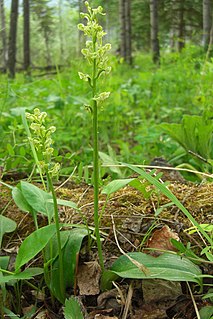
Platanthera obtusata, common name blunt-leaved orchid or small northern bog orchid, is a small species of orchid in the genus Platanthera. It widespread across much of the colder regions of the Northern Hemisphere, though rare in some parts of its range. Two subspecies are recognized:

Tulipa sylvestris, the wild tulip or woodland tulip, is a Eurasian and North African species of wild tulip, a plant in the lily family. Its native range extends from Portugal and Morocco to western China, covering most of the Mediterranean and Black Sea Basins, and Central Asia. The species is also cultivated as an ornamental and naturalized in central and northern Europe as well as a few scattered locations in North America. It is a bulb-forming perennial, usually with yellow flowers, sometimes tinged red on the outside. In the Pakistani region of Balochistan it is the provincial flower.
Antennaria parlinii is a North American species of flowering plants in the daisy family known by the common name Parlin's pussytoes. It is widespread across eastern and central Canada and eastern and central United States, from Manitoba to Nova Scotia south as far as Texas and Georgia.
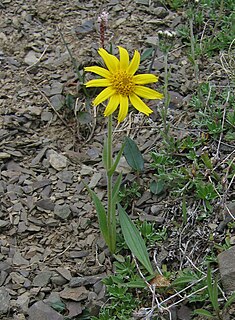
Arnica angustifolia is an Arctic and alpine species of plants in the sunflower family, known by the common names narrowleaf arnica and Arctic arnica. It is native to colder regions in Europe, Asia, and North America (northern and western Canada, Alaska, northern Rocky Mountains.
Conoclinium betonicifolium, the betony-leaf mistflower or betonyleaf thoroughwort, is a North American species of flowering plants in the sunflower family. It is widespread across much of Mexico from Chihuahua to Quintana Roo, and has also been found in Texas and Guatemala.
Conoclinium dissectum, the palm-leaf mistflower or palmleaf thoroughwort, is a North American species of flowering plants in the sunflower family. It is native to northern Mexico and the southwestern United States.

Crepis foetida is a European species of flowering plant in the daisy family with the common name stinking hawksbeard. It is widespread across much of Europe and Siberia, as well as being sparingly naturalized in scattered locations in the United States and Australia.
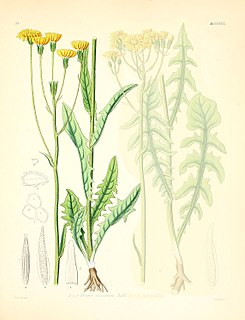
Crepis nicaeensis is a European species of flowering plant in the daisy family with the common names French hawk's-beard and Turkish hawksbeard. It is widespread across much of Europe, as well as being sparingly naturalized in scattered locations in the United States and Canada.

Crepis vesicaria is a European species of flowering plant in the daisy family with the common name beaked hawk's-beard. It is native to the eastern and southern Europe from Ireland and Portugal east as far as Germany, Austria, and Greece. It become naturalized in scattered locations in North America.
Solidago riddellii is a North American plant species in the genus Solidago of the sunflower family. It grows primarily in the Great Lakes region of Ontario and the north-central United States, as well as in the northeastern Great Plains of Minnesota, Iowa, and Missouri. There are reports of isolated populations in Georgia, Arkansas, and southwestern South Dakota.
Polygonum patulum, called tree hogweed, is a species of flowering plant in the knotweed family. It is native to the Mediterranean region, eastern Europe, the Caucasus, Siberia, Central Asia, Mongolia, and the Province of Xinjiang in northwestern China. It has also become sparingly naturalized in scattered locations in Australia and North America.

